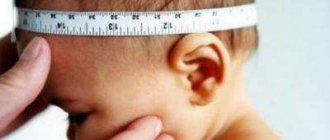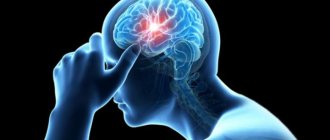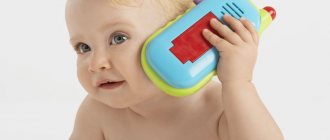Many experts are sure: the sooner you start working with your child to develop certain skills, the faster he will acquire the abilities and skills that are important for a full life. Numerous early learning and child development systems are built on this principle. We offer a brief description of the most popular methods today so that you can get your bearings and choose the one that will help maximize the potential of your child.
It is difficult to classify early development systems due to their universality, but psychologists conditionally divide them into physical and general developmental.
Glen Doman Method
The famous American doctor and scientist Glen Doman, who founded the Institute for the Development of Human Potential, initially developed his method for children with severe pathologies of the central nervous system, and later began to use it in working with healthy children.
Doman discovered and proved an important law of the human brain: it develops and grows only if it works intensively. And the greater the load on the brain of a child under 3 years of age, the more dynamic the development of his intellect will be.
According to Doman's research, a baby's brain cells are programmed for learning from birth, and until the age of 3 they actively grow, and after that it decreases significantly and finally fades by the age of 6. In addition, the child does not need any motivation - if everything is done methodically correctly, then the child will be able to easily master any amount of knowledge.
According to Doman’s method, the baby is shown cards with various images: drawings (intellectual bits), words, dots (for mastering counting) and there should be several such displays daily. Classes are based on memorizing a graphic image and its corresponding sound and contribute to the rapid accumulation of vocabulary.
In addition, Doman pays special attention to physical development, and in this he has also achieved considerable success. His method involves obtaining encyclopedic knowledge and at the same time the possibility of excellent physical development. Classes using the Doman method begin at 3 months.
Minuses:
The child, receiving megabits of information, is not yet able to apply them in practice. This knowledge resembles a huge archive, which is problematic for a little one to work with. In addition, classes using this system require complete dedication from parents, when they have to devote their entire lives only to the development of the baby, even if they purchase ready-made cards.
What is early development?
Early development involves the development of abilities and the assistance of parents in awakening the child’s interest in discovering his own potential. In this case, abilities mean:
- physical activity (body skills, strength, endurance, agility);
- household skills (self-care: the ability to eat, drink, dress, comb your hair, clean up after yourself);
- creativity (sculpting, drawing, applique, etc.);
- intelligence (speech, reading, writing, encyclopedic knowledge, intellectual games).
The human nervous system completes its formation by the age of 11. At the same time, by the age of 3, the brain is already 70-80% formed. After this fact became known to science, the world of children's pedagogy turned upside down - from then on, early development methods began to appear. Their goal is to enable children to reach their full potential. In simple words - to raise geniuses.
It is important to understand that a child’s development occurs in any case - with his active interaction with people, household items, toys, nature, and so on. At the same time, the help of parents familiar with popular early development methods gives the child a good base and advantage in school.
Methodology of Nikolai Zaitsev
This unique technique is classified as traditional. All manuals, the most famous of which are Zaitsev's Cubes, are based on the natural need of children to play.
Using letter cubes (boxes filled with appropriate material), children are taught to read. Cubes depicting voiced consonants are filled with pieces of iron, unvoiced ones with pieces of wood, and vowels with copper coins.
In addition, certain colors are assigned to letters, which help to learn the basic rules of phonetics. The set of cubes comes with tables that allow you to sing individual syllables, put them into words, and master difficult-to-read combinations of consonant letters.
To study the basics of mathematics, Zaitsev developed a special “Counting” system, and for older children - cubes and tables for learning English.
This system is not limited to working with these visual aids; it covers many areas of child development and uses various methods. This method is designed for children from 3.5 years old.
Minuses:
Due to the specifics of this program, based on the use of schematic images, Zaitsev’s technique requires additional, very painstaking work with various objects.
Children's developmental techniques
The modern world is developing rapidly, and in order for our children to be ready to accept it as it will appear before them in the coming years, various children's developmental methods are being created. They involve the training and development of children literally from the very first days of their lives. Unobtrusively, in a playful, accessible form for the baby, extensive knowledge is presented, which at this age is remembered very easily. As a result, by the time a child goes to school, he has conscious thinking, logic, memory, speech, attention, imagination, perseverance and many other useful qualities. Parents do not have to worry - their child is ready for further learning and perception of the next layers of knowledge.
Below is a list of the most popular children's developmental techniques, with brief annotations about each of them. We advise you to subscribe to new articles on the site - we will talk in more detail about each technique separately.
1. Montessori method. The motto of the Montessori method is “Help me do it myself.” The child chooses what and how to play, and the adult only watches from the side and guides.
2. Glen Doman's technique. Doman is the creator of a method of teaching reading for very young children (up to 3 years old). The method includes unique developmental kits, cards and other developmental aids.
3. Method of Cecile Lupan. Lupan's book tells in detail how best to help a child learn swimming, languages, reading, and music.
4. Nikitin’s technique. The Nikitins' method is based on their own parental experience and consists of specially developed sets of games for children together with their parents. These are sets of puzzles that have a set of tasks with increasing complexity.
5. Zaitsev’s technique. Zaitsev’s method of teaching reading according to warehouses is widely used in many kindergartens. Warehouses are located on the edges of multi-colored jingling cubes, and are easily remembered by children of primary preschool age.
6. Tyulenev’s technique. Tyulenev’s method calls for teaching a child at a very early age, before he has learned to walk. The system has strict rules, special attention is given to the choice of the environment for the child, and the careful selection of toys and books.
7. Method of Makoto Shichida. The technique is based on the anatomical features of the right and left hemispheres of the child’s brain. Alternating exercises have a positive effect on the development of both hemispheres.
8. Waldorf pedagogy. The learning process in Waldorf pedagogy is associated with certain age-related characteristics of the child’s development, and therefore is structured so that the child receives knowledge of a special nature during those periods of development when he is most prepared for it.
9. Reggio Emilia. "Reggio Emilia" is more an experience of a new attitude to raising children than a methodology. According to this development technology, children learn freely, are co-authors of their teachers and initiators of new projects, and independently obtain information based on the knowledge of teachers.
10. Zheleznov’s technique. The purpose of the methodology, which previously pursued the task of preparing a child for music school, today pays more attention to the development of speech, mastery of one’s body, and stimulation of children’s imagination through music. The musical accompaniment is carefully selected taking into account the interests and age of the children.
11. Charkovsky's technique. Charkovsky's method is a system of water development for a child. The author of the technique claims that hypoxia during immersion in water, to which the body reacts with increased nutrition of the brain, leads to leaps in mental development in children.
12. Howard Gardner's technique. Howard's method is designed more for the American educational standard and involves children learning English. Lessons are held exclusively in English, grades are not given, and the knowledge gained is assessed according to a multi-level system.
13. Methodology of O.N. Teplyakova. The technique allows you to develop a child from the very first days, playing educational games with him and encouraging him to communicate with other people.
14. Shinichi (Shinichi) Suzuki technique. Shinichi Suzuki is confident that learning music should go hand in hand with learning to read and write. His method is based on daily musical lessons, accompanied by parental support and gentle but persistent music teaching from the first years of a child’s life.
15. Method of Zoltan Dienes. The essence of Zoltan Dienes's approach lies in the opinion that all the mathematical knowledge that children gain through playing and dancing gives a more effective result than ordinary solvers and examples.
16. Tony Buzan technique . Tony Buzan is the official creator of the Mind Mapping method of thinking. A one-year-old child accumulates a huge amount of memory, which grows at the speed of light rays. You can organize information using mind maps, on which even a one-year-old child can write his thoughts and feelings using figurative signs.
17. Methodology of Maria Gmoszynska . Maria Gmoshinskaya believes that it is necessary to teach children to draw from infancy, as soon as the child learns to sit independently. The technique is based on the finger drawing technique, as well as drawing with palms.
18. Voskobovich technique . Voskobovich is the creator of famous educational games for children that offer the child several tasks at the same time. Solving them allows you to master numbers and letters, recognize and remember colors, shapes, train fine motor skills, improve speech, memory, attention, thinking, and imagination.
19. Masaru Ibuka technique . According to Masaru Ibuka, arousing interest in the subject of study is the best pedagogical method. His technique teaches to awaken interest in numbers before learning to count, and to arouse interest in the process of writing itself before learning to write.
20. TRIZ program . This program was developed by G.S. Altshuller and literally stands for “Theory of Inventive Problem Solving.” During the lessons there is a continuous search for solutions to various technical problems. This develops flexibility of thinking, originality and increases interest in learning.
21. Zankov program . The program is based on the idea of combining the education, upbringing and development of a child into a single process. Zankov is confident that for better results it is necessary to train without negative experience and coercion, through game situations and constantly arousing the interest of the children.
22. Elkonin-Davydov system . The methodology involves group and discussion forms of learning, which are based on the acquisition of knowledge by children, and not on the mindless absorption of ready-made information in the form of diagrams, rules and theorems. As a result of learning, children can argue their point of view and demand evidence for statements.
23. Eidetic system . At the School of Eidetics, children are taught to think in images. This technique allows you to keep in memory a huge amount of necessary information, animating the information received with the help of images.
24. Methodology of Mikhail Shchetinin . Shchetinin’s method found its manifestation in a school isolated from society and close to nature. The main principle of the school is the moral and spiritual development of each child. There are no classes, topics for lessons, bells or assignments; each student can easily act as a teacher, and the teacher as a student.
25. Methodology of Kitaev and Trunov . The basic principles of the method have been known since ancient times and imply dynamic gymnastics for a baby up to one year old as the main development factor. The technique includes a series of movements for the little ones, then strength exercises with a semantic load, games, strength and kneading exercises, as well as classes at special sports complexes.
26. Method of Shalva Amonashvili . According to Amonashvili’s method, a child’s education must begin at the age of six. The effectiveness of teaching will depend directly on the teacher, who must convey vital values to his student, without allowing any violence against the child’s personality.
27. Method of Alice Samburskaya . The uniqueness of Alisa Samburskaya’s system lies in the fact that any activity of little students is accompanied by music. Satisfying the child's intellectual needs and strengthening his interest in learning, the technique simultaneously introduces children to the art of music.
28. Free dance by Isadora Duncan . Free dance of Isadora Duncan is a technique of the followers of the great dancer, with the help of which children learn to understand classical music and express their feelings in free movement.
29. “Finger games” . It is known that the development of fine motor skills stimulates brain development, so a six-month-old baby should have a massage of the hands and fingers, and for older children special exercises with increasing amplitude are recommended.
30. Methodology “Good Tales” . Lopatina A. A. and Skretsova M. V. are the creators of an early development methodology based on teaching children through play situations and good fairy tales. The methodology includes a whole system of cycles of poems and fairy tales, built in accordance with the theme of the lesson.
31. Trunov's technique . Trutov’s methodology is built on the principles of conscious, deliberate parenting. According to the method, the education and development of a child up to one year old can be effective without abstruse aids and fashionable toys. However, the baby’s parents need to constantly introduce him to the world around him, to objects, and to his body.
32. Peterson training system .
This technique is built on the principle of layering. In accordance with age, the child receives knowledge about the subject, which his memory is able to retain. As knowledge about this subject develops, it only deepens and expands.
Maria Montessori Method
If you want your child to be independent in learning from childhood, then the Montessori method is what you need.
Create a special environment for your child. He will be in the center of this small world, and you will be nearby, always ready to support and come to the rescue.
The games developed by Maria Montessori include activities on the development of speech, sensory, reading, writing and practical life.
They use a variety of frames, beads, inserts and other useful things that not only arouse keen interest in children, but also perfectly develop their fine motor skills and imaginative thinking.
Minuses:
The program was created for children with developmental problems, and the role of an adult in it is minimized - the child seems to be inside his own world. The technique was invented almost a hundred years ago, and since then it has not changed much, unlike modern kids. Today's children perform many tasks from the Montessori program perfectly by the age of two.
Pros and cons of early development
The bad parent is the one who doesn’t want his child to be the smartest. But, having become infected with the idea of early development, he forgets about a sense of proportion. Having once heard that “after 3 it’s too late,” the parent tries to catch up in a panic, sometimes forgetting about common sense.
Early development is necessary for a child, as it forms:
- fine motor skills (development of dexterity of fingers and hands, which has a beneficial effect on thinking,
- coordination, spatial orientation, visual memory and speech);
- a basic understanding of the world (through special cards the child learns about the world around him).
At the same time, parents should understand that a child is not an experimental project, but a living person; he must be not only smart, but also happy, cheerful, and healthy. It is necessary to strive to ensure that early development becomes just a part of life, along with games, communication and proper rest. This way it will bring maximum benefit.
Methodology of the Nikitin family
This technique is designed for children to play together with their parents. The variety of tasks offered is very wide and is designed for children of different ages and different levels of development, which is very convenient.
Most often, these are games in the form of puzzles, aimed at recognizing and completing different images, that is, at developing imaginative and logical thinking. In other words, this is a complex for the child’s mind and creativity.
Each of the games is a set of tasks that the child solves with the help of Nikitin's Cubes, as well as squares made of plastic or cardboard, bricks, and parts from a construction set. Problems are offered in various forms: in the form of a picture, model, drawing, oral or written instructions. Thus, the child becomes familiar with various ways of transmitting information.
Methods of child development according to Zheleznov
This technique is unusual and universal. It is based on exercises, gesture and finger play exercises, as well as on learning educational songs and tongue twisters.
Thanks to its use, parents will be able to develop the child’s personal characteristics, as well as a number of other necessary skills. In addition to the fact that the baby will become more intellectually developed, he will be able to strengthen his physical performance. The system is simple, effective and can be implemented at home.
A combination of different techniques is the best option
Some of the programs, such as Montessori or Domana, were originally developed for a narrow circle of children, and there they showed good results. But this does not mean that they will be effective for your baby.
In a good development center, specialists should offer you several programs to choose from.
The main criterion here should be an individual approach to the child. It is necessary to start classes with one thing, gradually adding new techniques.
Psychologists have recently insisted that parents should not force the child’s intellectual development so much. Unfortunately, it is impossible to raise a genius; you can only develop the already inherent abilities in a child.
Child development according to the Montessori system
Maria Montessori is a doctor of medical sciences from Italy, who created a unique teaching method not only for completely healthy children, but also for weakened children. This system is based on creating an ideal atmosphere for the little one in which he could develop and learn without the help of experienced psychologists. Thanks to this approach, children gain life experience early and develop motor and sensory skills characteristic of their age category.
Since the method is based on increased age-related sensitivity and thinking, the scheme built by Maria Montessori is truly effective and allows you to develop the individuality and personal characteristics of a toddler without turning to specialists.
The basic recommendations of this technique include:
- Introduction of gaming practice into the learning process;
- Classes related to the development of writing, sensory indicators, reading, everyday skills and correct speech construction;
- Provocative involvement of the child’s thinking, rather than the use of mechanical execution of assigned tasks;
- Using toys with a large number of small parts that allow the child to develop fine motor skills.
The Montessori system identifies the following patterns of development of skills in a child:
- Before the age of six, a child's sensory system develops;
- Until the age of three, the baby learns to perceive order;
- From one to four years of age, skills of action and movement are formed;
- By the age of six, the basics of speech are formed;
- From the age of two and a half until the age of six, socialization skills are formed.
Maria Montessori claims that lost time cannot be made up. If parents do not start working with their child at the appropriate time, then the opportunity to develop this or that skill will be lost forever.
Principles
When dealing with the early development of a child at home, you should adhere to the following principles.
- Each child is individual, so the pace of classes should take into account his characteristics.
- The proposed tasks must correspond to both the age and specifics of the child. So, if the baby easily does what he is supposed to do according to his age, you can safely offer him something more difficult.
- Everything a child does should be interesting to him. Lessons do not need to be structured in the form of “lectures” and “seminars”; parents need to think in advance about an exciting game form that will bring pleasure to the child.
- Development must be comprehensive. You should not teach your child music, forgetting about other areas of art, physical activity, and knowledge of the world around him.
You can’t compare your child with the children of friends or acquaintances, worry that “Yulia’s son reads, but mine doesn’t understand what the letter A looks like.” This approach will not lead to anything good. You can only compare a child with himself, but from an earlier period. Lessons need to be structured taking into account individual characteristics, and not based on what “other children” can do. A parent should create comfortable conditions for the child that allow him to actively explore the world, and not brag to friends and relatives that a 3-year-old child can name and show in pictures 47 species of birds.
Colored sticks for counting Cuisenaire.
Cuisenaire sticks.
This system consists of a set of sticks in 10 different colors and is suitable for ages 2-9 years. Their length varies from 1 to 10 cm. Verticals of the same length have one shade and correspond to a certain number. The longer the stick, the greater the numerical value it corresponds to.
What do sticks teach?
Working with chopsticks develops in a child the following concepts:
- Colors.
- Size.
- Forms.
- Numerical sequence.
- Awareness of the “more-less” relationship.
- Concepts of length and height.
- Sides of the horizon.
For starters, a simplified set of 116 sticks, as well as an album for storing them, is quite enough.










